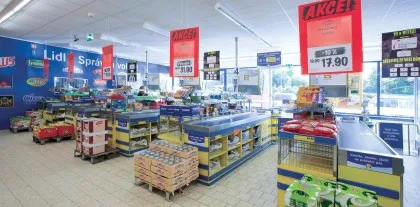
Retailing today calls for well thought-through strategy
To say that the retail industry today faces unprecedented change is an understatement. Gone are the days wherein retailers only need to be armed with a “one size fits all” approach. With the fast adoption of smart gadgets and the rapid expansion of free WiFi hotspots and reliable 3G connections, retailers must be prepared to embrace a radical form of thinking to survive the ever-competitive retail landscape.
Retailers must come up with concepts that will be deemed satisfying by consumers whose purchasing behaviours are constantly being altered by the digital era.
Technological advances have yielded savvier consumers. Their expectations and preferences are becoming more sophisticated. Today’s consumers can now easily identify and leverage various sources of information so that they may optimise elements of their shopping journey.
Nonetheless, by identifying challenges that come with the digital era, retailers will have a greater chance of granting consumers a seamless shopping experience regardless of the channel.
Retailers face a generation of busy consumers who rely heavily on instant gratification. A consumer with limited time has less tolerance for unappealing information. Retailers have to find ways to capture the consumer’s attention and keep it long enough to get the brand’s message across. If not, a consumer can easily tap into a wealth of information and find another merchant that can surpass his standards.
In an attempt to demand the attention of increasingly distracted consumers, some retailers commit the mistake of putting its consumers in perplexing purchase paths.
What must be remembered is that consumers oftentimes do not need to be bombarded with flashy and unnecessary platforms. What they need is a simplified yet engaging shopping experience. Some retailers offer so many discount schemes and loyalty programmes that consumers end up feeling confused and alienated because they cannot keep track of all the programmes anymore.
In a digital world, the more relevant the content is, the better the chances of getting noticed by consumers. It is worth noting that the fastest-growing retailer in the mature markets is the hard discounter Lidl.
Europe is static with zero growth and zero profit in many areas of sectors; Lidl and Aldi are defying this trend by delivering what large segments of consumers want — and that is value for money.
A visit to the new Lidl is a must for any serious retailer worldwide. It’s about implementation … you go into the store and there is fresh bread and pastry, a must in Europe; the fresh vegetables and fruit are limited in choice but they are in perfect quality. There may only be three types of tomato, but the strategy has been thought through! A vine tomato that still smells of growing that says ‘eco’ to the consumer, then there are the packaged cherry tomatoes, and large tomatoes to go with the Mozzarella. Two ripe avocados in a pack ready to eat but you have to take it on trust as the packaging stop you feeling the fruit.
Another struggle which retailers face is ensuring that their physical stores mirror the portrayed image of their websites or apps. How do retailers attract its consumers to come to the actual store?
Some retailers might have fancy websites but the stores do not look equally appealing. Many shoppers appreciate stores which promise a unique shopping experience — stores that allow them to not just make a simple transaction but to also relax, find inspiration, and take a break from their daily routine.
Time magazine previously published a cover story entitled The Mindful Revolution. As per the story, people consider retail stores as personal spaces wherein they can immerse themselves.
Needless to say, the physical store has to be an embodiment of the brand. The store must enable experiences that the online platform cannot deliver. The store has to be designed in such a way that consumers can enjoy themselves without forgetting the brand.
While the utilisation of traditional displays will continue, technology can be harnessed to augment the shopping experience. Smart phones, for example, can be incorporated to serve as in-store digital catalogues or menu. Some clothing stores make use of digital “mirrors” that enable shoppers to choose which clothes suit them without even removing the ones they’re actually wearing.
On the other hand, consumers must still have a motivation to go back to the website. Merchants should show their consumers that there’s still something to look forward to, such as upcoming online contests or giveaways.
In order to thrive in this digitally dependent age, a retailer should be able to uphold its consumers’ interest not just for its e-commerce but also for its brick-and-mortar. Modern retailers must know how to take advantage of their physical assets so that they may leave a lasting impact.
With an increasing number of channels that are being used to market the products, another challenge which modern retailers face is the alignment of their inventory with the demands of consumers. There is no point in concentrating on marketing if the retailers won’t be able to meet such demands in a timely manner.
More and more retailers are altering their system to give way for more fluent purchasing options to their clients such as same-day delivery schemes and flexible return/exchange policies for online orders.
Processing thousands of transactions each year shouldn’t leave a retail group confused but instead encourage it to strengthen its operational backbone.
As technology advances, so does the paranoia of consumers about data breaches. More than promoting the brand, modern retailers also need to make their consumers feel secured in sharing their data especially for brands with loyalty programmes. There has to be a disclaimer that the retailer isn’t lacking when it comes to protecting a consumer’s privacy.
There is no point as well in forcing a consumer to share data. Nonetheless, according to a Cisco-conducted study, 52% of consumers are willing to share information if they’ll get some sort of discount or incentive for their future purchases. Regardless of what strategy the retailer implements, such strategy must be transparent and educational so that the retailer will appear credible and trustworthy.
Retailers in this age will constantly grapple with the above-mentioned issues. While consumers still prioritise the quality of a product or service, they are similarly yearning for retailers that can provide innovative experiences. It is crucial, therefore, for retailers to have a clear view of their consumers’ behaviour.
Successful retailers are good at integrating their consumers’ data, developing insights from that aggregated information, and then applying such insights to the brand’s marketing strategies and merchandising processes.
SMI (share my insights) is one of the new leaders in this field. Consumers can be tracked in store and a very clear picture developed of where each consumer goes, where he or she stops to look at a product and at what points the consumer make purchases.
With such state-of-the-art analysis, quality information can be delivered within minutes.
To come up with an effective business model, retailers must also regularly assess their portfolio to determine which facet needs an adjustment. It may be the inventory, the service, or the marketing.
The digital era is here to stay but it shouldn’t be perceived as a threat. Although technology will never be devoid of challenges, if used appropriately, retailers can develop winning propositions. Only those players who can respond to changing trends and dynamics with eagerness will survive the rough times of significant change ahead.
One of the immediate decisions to think about is: Are you just a retail platform upon which to market manufacturers brands … or are you a brand in your own right, that you are going to leverage, develop and grow by creating a selection of goods and products that meet the needs of your consumers and shoppers?
Greg Thain is the CEO of M3 Modern Marketing Media, an innovative and ground-breaking digital Internet business, as well as the Executive Chairman of New Markets Investments. He is also an Adjunct Professor at the International University of Monaco and author of Storewars: The Battle for Mindspace & Shelfspace and FMCG: The Power of Fast-Moving Consumer Goods.



















 Advertise
Advertise







